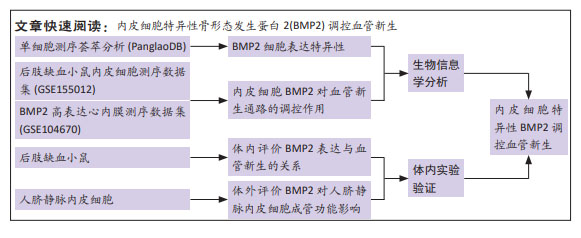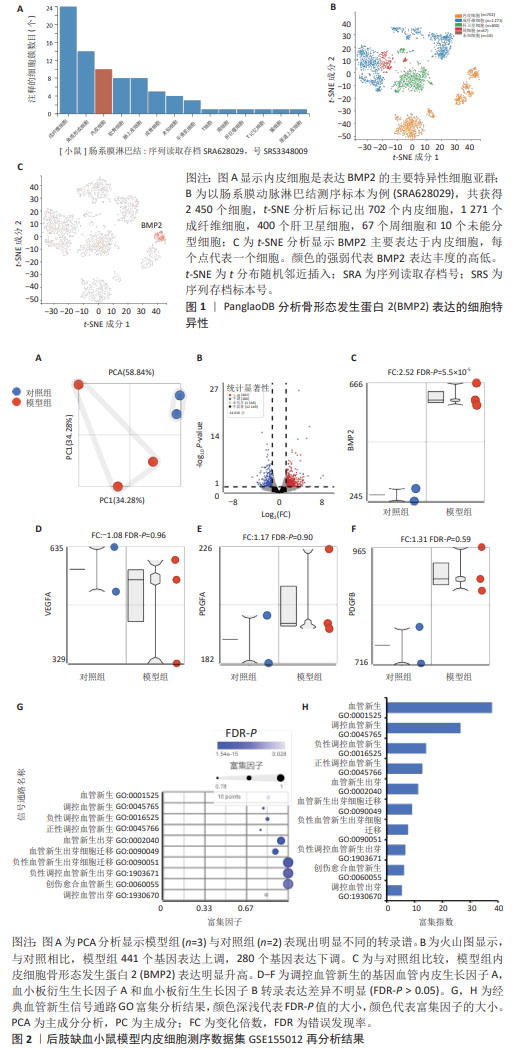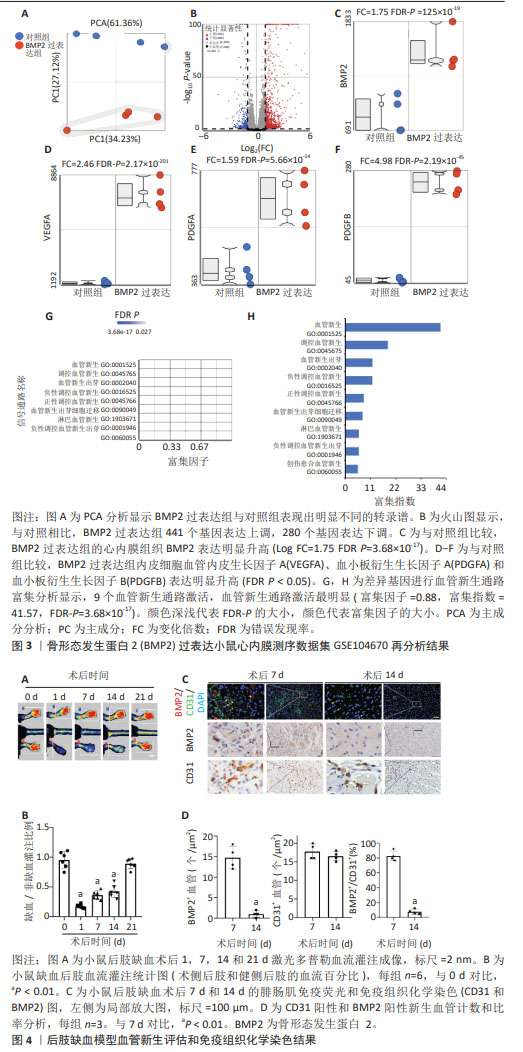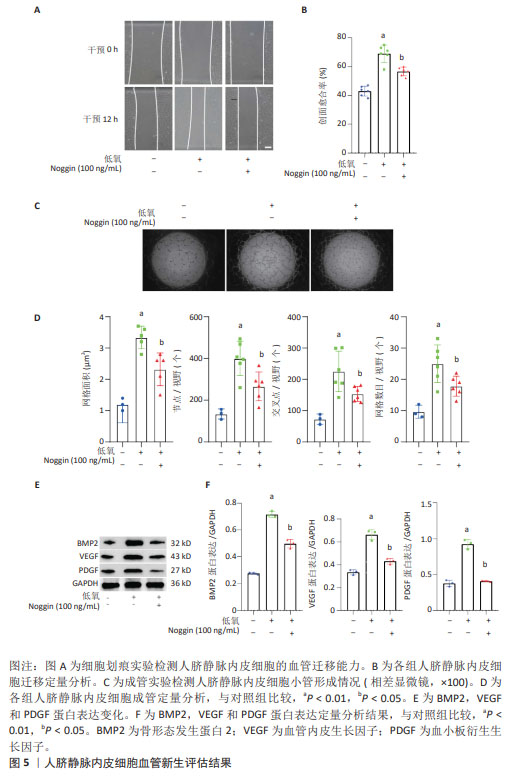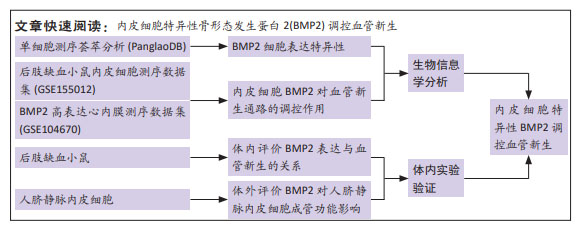[1] JEBARI-BENSLAIMAN S, GALICIA-GARCíA U, LARREA-SEBAL A, et al. Pathophysiology of atherosclerosis. Int J Mol Sci. 2022;23(6): 3346.
[2] HEROLD J, KALUCKA J. Angiogenesis in adipose tissue: the interplay between adipose and endothelial cells. Front Physiol. 2021;11:624903.
[3] XU SW, ILYAS I, LITTLE PJ, et al. Endothelial dysfunction in atherosclerotic cardiovascular diseases and beyond: from mechanism to pharmacotherapies. Pharmacol Rev. 2021;73(3):924-967.
[4] WU XK, REBOLL MR, KORF-KLINGEBIEL M, et al. Angiogenesis after acute myocardial infarction. Cardiovasc Res. 2021;117(5):1257-1273.
[5] LI TT, LAI YW, HAN X, et al. BMP2 as a promising anticancer approach: functions and molecular mechanisms. Invest New Drugs. 2022;40(6):1322-1332.
[6] YANG PR, TRONCONE L, AUGUR ZM, et al. The role of bone morphogenetic protein signaling in vascular calcification. Bone. 2020; 141:115542.
[7] 裴建升,杨文娟,何静,等.骨形态发生蛋白2介导同型半胱氨酸促进血管钙化[J].中国组织工程研究,2024,28(25): 4027-4033.
[8] LOWERY JW, ROSEN V. Bone morphogenetic protein-based therapeutic approaches. Cold Spring Harb Perspect Biol. 2018;10(4): a022327.
[9] OUYANG L, SU XY, LI WX, et al. ALKBH1-demethylated DNA N-6-methyladenine modification triggers vascular calcification via osteogenic reprogramming in chronic kidney disease. J Clin Invest. 2021;131(14): e146985.
[10] XIE F, CUI QK, WANG ZY, et al. ILF3 is responsible for hyperlipidemia-induced arteriosclerotic calcification by mediating BMP2 and STAT1 transcription. J Mol Cell Cardiol. 2021;161:39-52.
[11] WANG S, HU SW, WANG J, et al. Conditioned medium from bone marrow-derived mesenchymal stem cells inhibits vascular calcification through blockade of the BMP2-Smad1/5/8 signaling pathway. Stem Cell Res Ther. 2018;9(1):160.
[12] MAJIDPOOR J, MORTEZAEE K. Angiogenesis as a hallmark of solid tumors-clinical perspectives. Cell Oncol (Dordr). 2021;44(4): 715-737.
[13] FRANZÉN O, BJÖRKEGREN JLM. Alona: a web server for single-cell RNA-seq analysis. Bioinformatics. 2020;36(12):3910-3912.
[14] FU H, SUN Y, SHAO Y, et al. Interleukin 35 delays hindlimb ischemia-induced angiogenesis through regulating ROS-extracellular matrix but spares later regenerative angiogenesis. Front Immunol. 2020;11:595813.
[15] PAPOUTSI T, LUNA-ZURITA L, PRADOS B, et al. Bmp2 and Notch cooperate to pattern the embryonic endocardium. Development. 2018;145(13):dev163378.
[16] NIIYAMA H, HUANG NF, ROLLINS MD, et al. Murine model of hindlimb ischemia. J Vis Exp. 2009;(23):1035.
[17] HE WX, CHEN PX, CHEN QQ, et al. Cytokine storm: behind the scenes of the collateral circulation after acute myocardial infarction. Inflamm Res. 2022;71(10-11): 1143-1158.
[18] SPADACCIO C, NENNA A, ROSE D, et al. The role of angiogenesis and arteriogenesisin myocardial infarction and coronary revascularization. J Cardiovasc Transl Res. 2022;15(5):1024-1048.
[19] ZENG Q, MOUSA M, NADUKKANDY AS, et al. Understanding tumour endothelial cell heterogeneity and function from single-cell omics. Nat Rev Cancer. 2023;23(8): 544-564.
[20] YUAN F, PAN X, ZENG T, et al. Identifying cell-type specific genes and expression rules based on single-cell transcriptomic atlas data. Front Bioeng Biotechnol. 2020;8:350.
[21] HEINKE J, JUSCHKAT M, CHARLET A, et al. Antagonism and synergy between extracellular BMP modulators Tsg and BMPER balance blood vessel formation. J Cell Sci. 2013;126(14):3082-3094.
[22] DIVBAND B, AGHAZADEH M, AL-QAIM ZH, et al. Bioactive chitosan biguanidine-based injectable hydrogels as a novel BMP-2 and VEGF carrier for osteogenesis of dental pulp stem cells. Carbohydr Polym. 2021;273:118589.
[23] KIM DS, LEE JK, KIM JH, et al. Advanced PLGA hybrid scaffold with a bioactive PDRN/BMP2 nanocomplex for angiogenesis and bone regeneration using human fetal MSCs. Sci Adv. 2021;7(50):eabj1083.
[24] AL-SHABRAWEY M, HUSSEIN K, WANG F, et al. Bone morphogenetic protein-2 induces non-canonical inflammatory and oxidative pathways in human retinal endothelial cells. Front Immunol. 2021;11:568795.
[25] ZUO WH, ZENG P, CHEN X, et al. Promotive effects of bone morphogenetic protein 2 on angiogenesis in hepatocarcinoma via multiple signal pathways. Sci Rep. 2016;6: 37499.
[26] KWON MH, RHO BY, CHOI MJ, et al. BMP2 restores erectile dysfunction through neurovascular regeneration and fibrosis reduction in diabetic mice. Andrology. 2023. doi: 10.1111/andr.13475.
[27] LEE JH, PARTHIBAN P, JIN GZ, et al. Materials roles for promoting angiogenesis in tissue regeneration. Prog Mater Sci. 2021. doi: 10.1016/j.pmatsci.2020.100732.
[28] UEMURA A, FRUTTIGER M, D’AMORE PA, et al. VEGFR1 signaling in retinal angiogenesis and microinflammation. Prog Retin Eye Res. 2021; 84:100954.
[29] YU J, DARDIK A. A murine model of hind limb ischemia to study angiogenesis and arteriogenesis. Methods Mol Biol. 2018; 1717:135-143.
[30] BAI Y, LENG Y, YIN G, et al. Effects of combinations of BMP-2 with FGF-2 and/or VEGF on HUVECs angiogenesis in vitro and CAM angiogenesis in vivo. Cell Tissue Res. 2014;356(1):109-121.
[31] MI BB, CHEN L, XIONG Y, et al. Saliva exosomes-derived UBE2O mRNA promotes angiogenesis in cutaneous wounds by targeting SMAD6. Nanobiotechnology. 2020;18(1):68.
[32] VISHWAKARMA S, KAUR I. Molecular mediators and regulators of retinal angiogenesis. Semin Ophthalmol. 2023; 38(2):124-133.
[33] OMORPHOS NP, GAO CY, TAN SS, et al. Understanding angiogenesis and the role of angiogenic growth factors in the vascularisation of engineered tissues. Mol Biol Rep. 2021;48(1):941-950.
[34] ZHANG W, ZHU C, WU YM, et al. VEGF and BMP-2 promote bone regeneration by facilitating bone marrow stem cell homing and differentiation. Eur Cell Mater. 2014;27:1-11; discussion 11-12.
[35] RADY AAM, HAMDY SM, ABDEL-HAMID MA, et al. The role of VEGF and BMP-2 in stimulation of bone healing with using hybrid bio-composite scaffolds coated implants in animal model. Bull Natl Res Cent. 2020; 44(1):131.
[36] NOVAK S, MADUNIC J, SHUM L, et al. PDGF inhibits BMP2-induced bone healing. NPJ Regen Med. 2023;8(1):3.
[37] SCARFI S. Use of bone morphogenetic proteins in mesenchymal stem cell stimulation of cartilage and bone repair. World J Stem Cells. 2016;8(1):1-12. |
